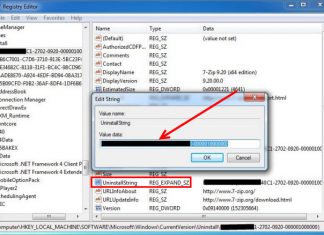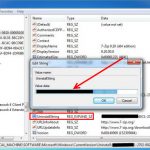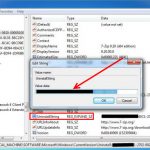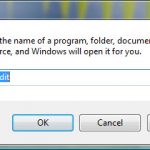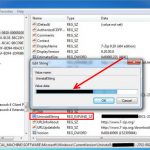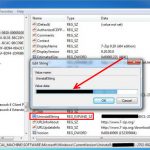Have you ever been in a meeting that you thought would last about thirty minutes, but instead, it went on to last about an hour and a half? Well, believe it or not, in a world where meetings are held practically every second – almost none of them have a clear meeting agenda or a plan.
Even though it seems like a clear agenda is not a big deal when it comes to meetings, in reality, it actually is. Not only will you waste too much time on a meeting instead of doing something productive, but the meeting itself won’t be as effective as it should be.
Well, we might have a solution for that particular problem. Today, we’re going to give you a handful of tips on organising your meetings, creating an effective meeting agenda, and ultimately boosting your efficiency and productivity. So, without further ado, let’s get started.
Why Do You Need A Meeting Agenda?

There isn’t a single corporate person who has never been in a disorganized meeting, lasts too long, and none of you has an idea what’s actually going on. Meetings, where all participants are unprepared and tend to veer off-track, are way too common and that has got to end. In addition to all of that, meetings without a clear agenda tend to become endless discussions on various topics, none of them as important as the one you thought you had to discuss.
All of this results in borderline criminal waste of time. Fortunately, all of this can be avoided if you have an agenda in mind. Before you call a meeting, organize it thoroughly and inform everyone on the main topics of the meeting and have everyone prepare their part. Once you start doing that, you’re going to notice significant improvements all around.
Everyone will be more productive and efficient, nobody will waste time in meets and all of you will be on the same page at the same time. Now, as wonderful as that seems – it’s not as easy to do as you might think. But, don’t worry – we’re here to help.
Consult With The Team
First of all, you can’t expect your team to be engaged in a meeting if they don’t know the agenda or they’re met with something that doesn’t concern or affect them. Although the latter does not happen that often, it still can, so keep that in mind. Either way, your team will be disengaged in a meeting, and that’s not what any of you want.
To prevent this from happening, you should start including your team members in the planning of the meeting. What we mean is, talk to them and have them voice their ideas on what the agenda of the meeting should be and listen to their input. Once again, easier said than done…
Implement Digital Workplace Into Your Daily Operation

Unfortunately, we’re aware that many feel the only way to do this is through email or another meeting which then defeats the purpose of the actual meeting – we thought we might give you an alternative solution.
According to some recent studies and a couple of experts in the field, one of which is AgilityPortal, your business can significantly benefit from a digital workplace solution. To keep it brief, imagine a platform where all members of a company can get together and discuss work-related topics, including meeting agendas, without wasting time or energy.
A digital workplace would allow you to freely communicate without the constraints of email or unnecessary meetings. A workplace like this would utilize all the necessary tools you’d use in an everyday work setting, allowing you to do a lot more than just plan a perfect meeting, but we’ll save that for another time.
Turn Meeting Topics Into Questions
Even when you have a clear agenda and topics for the meeting, think about presenting those topics. One neat trick that should help you improve your meeting efficiency is to present the topics as questions that you need to find the answer to. This should create an incentive for every team member to actively engage in a meeting and contribute, one way or another.
For instance, if the agenda of the meeting is office renovation, ask the questions like “Which colour would you feel is most motivating?” or “Do you feel chairs and desks need to be replaced, too?” or something along those lines. If you simply name your meeting “renovation”, your team won’t have a clue what the meeting is about, they won’t be able to prepare, and once again, you’ll lose more time explaining the agenda than actually discussing it.
Define The Goal Of The Meeting

Once again, the agenda itself might not be enough for everyone to understand what’s going on. Let’s take office renovation as an example once again. If you start a meeting with an “office renovation” as an agenda, without prior discussing it with your team and without turning the topics into questions – you’re back to square one.
You see, an agenda by itself is not enough and let us tell you why. The purpose of the meeting is equally as important as the agenda. How come? Well, just because your team knows you’re about to discuss office renovation, they still don’t know whether you want to inform them about it, whether you want their input on it or whether the purpose of this meeting is to decide whether you should renovate or not.
All of this will affect the effectiveness of the meeting. People need to know why they’re in a meeting. Because, if they assume they’re there to get informed, but you want their input – you’re going to waste time on brainstorming ideas, improvising on the spot and all of that will take way too much time and, more often than not – lead to some bad decisions.
Conclusion
So, what have we learned? In order to create an effective meeting agenda, you have to have an open discussion with your team and have an open channel for communication and discussions, in this case – a digital workplace. Also, you need to turn your meeting topics into questions to boost engagement, and finally, you need to define the goal or purpose of the meeting. Once you do all four – you’ll have a fool-proof meeting agenda and you’ll stop wasting your time and energy.





